|
GEP > Egypt > Articles > The Giza Plateau and Pyramids > The Great Pyramid
|
|
| OUTSIDE THE GREAT PYRAMID |
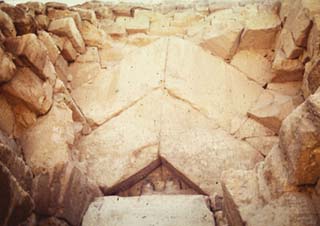 Engineering of stone blocks above the original north entrance to the Great Pyramid
|
Huge core blocks over the original outer entrance hint at complex structural engineering over all the interior passages and the grand gallery. Petrie's observations on the joints between the casing stones: "an area of some 35 sq. ft. each, the mean variation of the cut stone from a straight line and from a true square, is but .01 in. on a length of 75 in. Up the face the mean opening of the joint was but 1/50 in., yet the builders managed to fill the joint with cement. . . the weight of the stone to be moved — some 16 tons . . .to merely place such stones in exact contact at the sides would be careful work, but to do so with cement in the joints [and without chipping] seems almost impossible." Many blocks meet at compound angles and each stone is individually fitted to all adjacent stones. The 13-acre foundation varies from true level by less than 1 inch. (See also Ancient Egyptian Stone Technology
|
| INSIDE THE GREAT PYRAMID |
| Plan View (Looking down from the top) and Detail of Plan View |
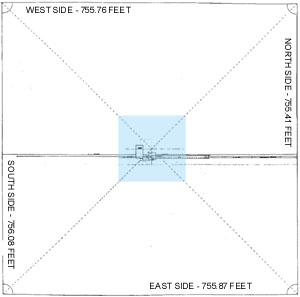 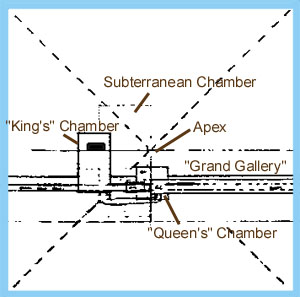 |
| North Section View (Looking through from the north) and Detail of North Section |
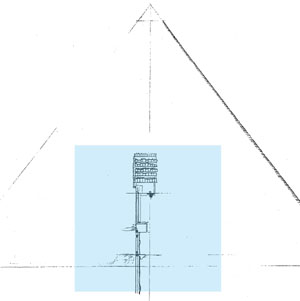 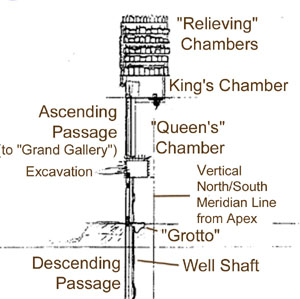 |
| East Section View (Looking through from the east) and Detail of East Section |
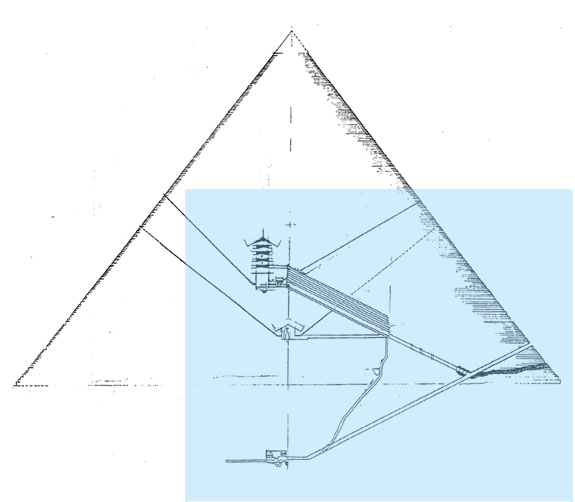 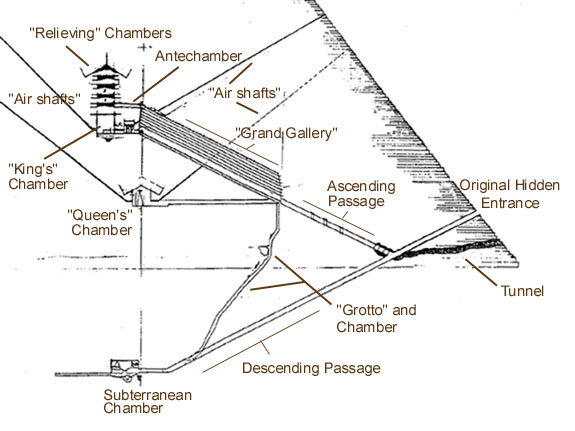 |
Previous |
Contents |
Next
Articles Index
Please Email .
© 2000 R.McKenty . All rights reserved.
Updated September 15, 2000.
http://www.sunship.com/egypt/giza/pyramid6.php